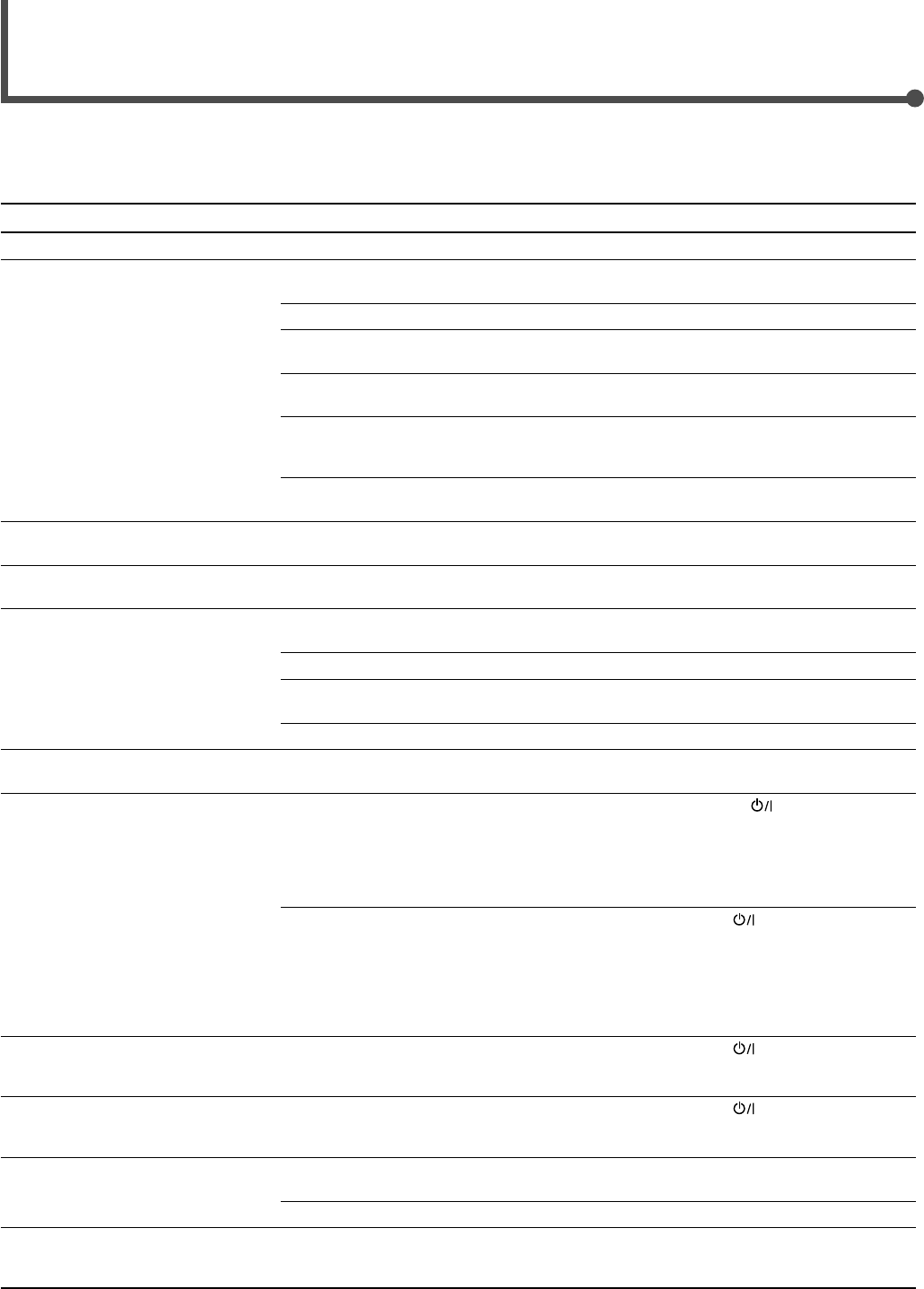
34
Troubleshooting
Use this chart to help you solve daily operational problems. If there is any problem you cannot solve, contact your JVC service
center.
SOLUTION
Plug the power cord into an AC outlet.
Check speaker wiring and reconnect if
necessary.
Select the correct source.
Press MUTING on the remote control to cancel
the mute.
Select the correct input mode (analog or
digital).
Check connections.
For analog connections, see pages 7 and 8.
For digital connections, see page 9.
Check speaker wiring and reconnect if
necessary.
Adjust the speaker output level (see pages 17
– 19).
Press SPEAKERS ON/OFF on the front panel
to activate the speakers (see page 12).
Connect an outdoor FM antenna or contact
your dealer.
Select a new station.
Check with your dealer to be sure you have the
correct antenna.
Check connections.
Move the antenna farther from automobile
traffic.
1. Press STANDBY/ON
on the front panel
to turn off the receiver.
2. Stop the playback source.
3. Turn on the receiver again, and adjust the
volume.
Press STANDBY/ON
on the front panel,
then check the speaker wiring.
If “OVERLOAD” does not disappear after
turning on the receiver again, unplug the AC
power cord, then plug it back in again.
If speaker wiring is not short-circuited, contact
your dealer.
Press STANDBY/ON
on the front panel to
turn off the receiver. After unplugging the
power cord, consult your dealer.
Press STANDBY/ON
on the front panel to
turn off the receiver. After unplugging the
power cord, consult your dealer.
Remove the obstruction.
Replace batteries in the remote control.
Press SOUND or source selection buttons first,
then press the button you want to use.
(See pages 18 and 29 – 31).
POSSIBLE CAUSE
The power cord is not plugged in.
Speaker signal cables are not
connected.
An incorrect source is selected.
Muting is activated.
An incorrect input mode (analog or
digital) is selected.
Connections are incorrect.
Speaker signal cables are not
connected properly.
The speaker output level is not set
correctly.
The speakers are deactivated.
Incoming signal is too weak.
The station is too far away.
The wrong antenna is being used.
Antennas are not connected properly.
Ignition noise from automobiles.
Speakers are overloaded because of
high volume.
Speakers are overloaded because of
short circuit of speaker terminals.
The built-in microcomputer is not
functioning correctly.
The receiver is overloaded because of a
high voltage.
There is an obstruction in front of the
remote sensor on the receiver.
Batteries are weak.
The remote control is not ready for your
intended operation.
PROBLEM
The power does not come on.
No sound from speakers.
Sounds from speakers are heard
unequally.
No test tone is available.
Continuous hiss or buzzing during FM
reception.
Occasional cracking noise during FM
reception.
“OVERLOAD” starts flashing on the
display.
“DSP MICOM NG” starts flashing on
the display.
The STANDBY lamp lights up after
turning on the power, but soon the
receiver turns off (into standby mode).
Remote control does not work.
Remote control does not operate as
you intend.
26-36_RX-5030VBK[UJ]f 03.5.15, 18:5934


















